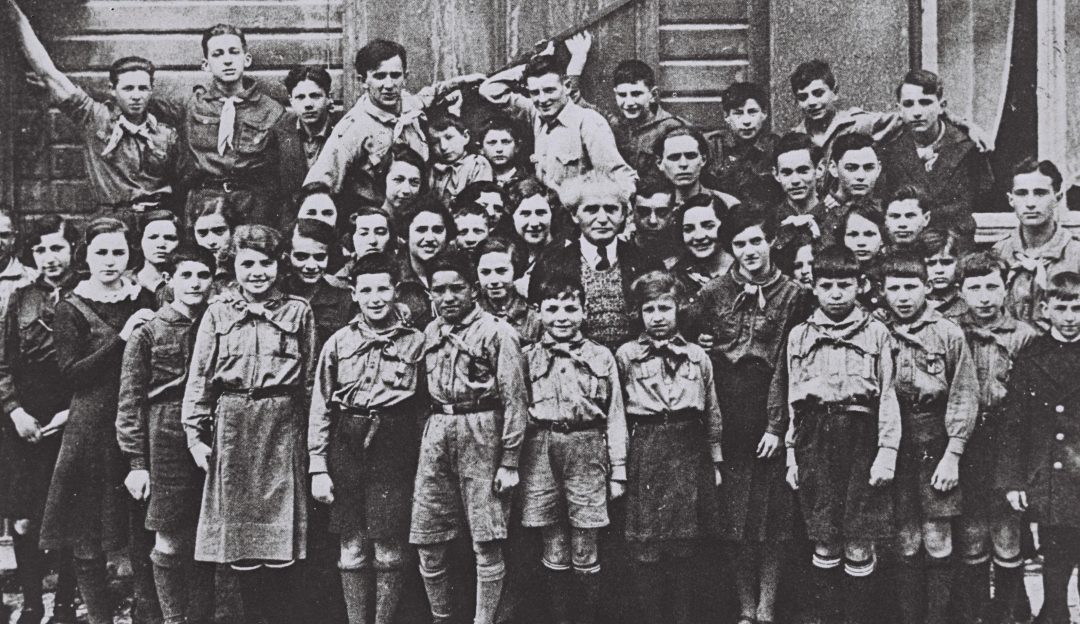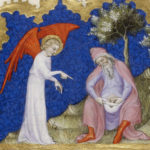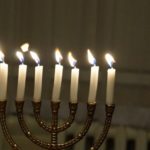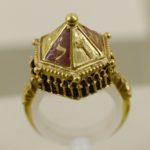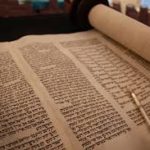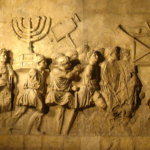Celebrating the Zionist Festival
Jerusalem-It’s the 29th of Cheshvan, not a particularly noteworthy day for most Jews in the world. But for Jews from Ethiopia, this date has long been observed as one of their main holidays, known as Sigd-a day celebrating their connection to Jerusalem and commitment to Jewish unity.
For the 80,000 who have immigrated from Ethiopia during past decades, today is a combination fast day, day of thanksgiving and gathering of the clan.
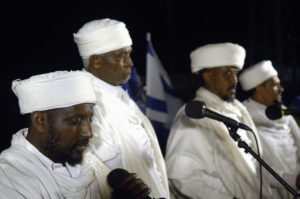 Dozens of kessim (Ethiopian Jewish religious leaders) make their way to the Western Wall to celebrate the day which expresses their yearning for Zion and their gratitude for the Torah. The slender figures cut an elegant path through the plaza in front of the wall. Swathed in simple white robes, tallits draped over their narrow shoulders, the kessim are accompanied by an entourage that includes an escort holding a colorful umbrella over their heads. The Ethiopian women arrive separately, clothed in their distinctive white dresses adorned with colorful hand-embroidered trim. Shoulders cloaked in white shawls, heads covered with colorful headscarves, the women advance shyly toward the kotel to take part in the prayer service marking Sigd here in the holy city.
Dozens of kessim (Ethiopian Jewish religious leaders) make their way to the Western Wall to celebrate the day which expresses their yearning for Zion and their gratitude for the Torah. The slender figures cut an elegant path through the plaza in front of the wall. Swathed in simple white robes, tallits draped over their narrow shoulders, the kessim are accompanied by an entourage that includes an escort holding a colorful umbrella over their heads. The Ethiopian women arrive separately, clothed in their distinctive white dresses adorned with colorful hand-embroidered trim. Shoulders cloaked in white shawls, heads covered with colorful headscarves, the women advance shyly toward the kotel to take part in the prayer service marking Sigd here in the holy city.
Prior to their mass aliya, generations of Ethiopian Jews yearned for Zion and expressed their longing in the annual Sigd festival. Jews would walk for days to arrive at a mountain top where thousands would join in prayer and listen to Torah readings.
Following the afternoon prayers and the blowing of the shofar, the community would descend from the mountain to partake of a festive meal. The holiday has its origins in the time of the prophet Nehemia, when the entire Jewish community assembled in Jerusalem for a day of fasting and confession. The day also commemorates the covenant between God and the Jewish people at Mt. Sinai.
For many young Ethiopian Jews now living in Israel, the mountain top Sigd exists only as a story recounted by their parents. Children were not included in the observances in Ethiopia because of the three-day trek to get there and to preserve the solemnity of the day.
Sigd Celebration
Today, Sigd is celebrated at the kotel and then at a mass gathering at the Haas/Sherover Promenade in Jerusalem’s Talpiot neighborhood. From the promenade, there’s a clear view of the Temple Mount, and thousands of Ethiopians of all ages come together to commemorate their unique holiday. Mingling with the colorful costumes and umbrellas of the elders, are the khaki and green uniforms of dozens of young Ethiopian men and women serving in the Israel Defence Forces. Younger teens are decked out in a variety of trendy clothing on this festive day with almost summer-like temperatures. Ancient Amharic chants make themselves heard over the gaggle of street Hebrew as the day progresses.
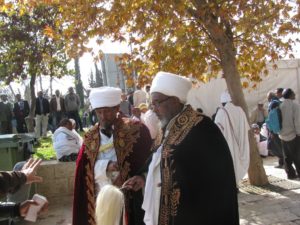 Rabbi David Yosef, a kes of the Ethiopian community who is a diminutive man with a silver beard who wears a knitted kippa, tells visitors his extraordinary life story and explains where Sigd fits into the life of Ethiopian Jews.
Rabbi David Yosef, a kes of the Ethiopian community who is a diminutive man with a silver beard who wears a knitted kippa, tells visitors his extraordinary life story and explains where Sigd fits into the life of Ethiopian Jews.
Rav Yosef graphically describes how men and women would separately observe the ritual of ascending the mountain for the great Sigd gathering. He points out that the tradition of Sigd was handed down by oral tradition. “Many Jews believe that we didn’t know from the oral tradition,” he says. Rav Yosef carefully explains the Ethiopian Jewish engagement and wedding ceremonies and asserts that their practice conforms to the Mishnaic description in Tractate Kiddushin (part of the Oral Law) of what constitutes proper Jewish betrothal.
He closes his remarks by noting that Sigd was essentially a way of remembering Jerusalem and strengthening Jews in a difficult galut (Diaspora) situation. But the holiday is just as relevant today. “We missed Jerusalem for thousands of years,” Rav Yosef notes. “Today, in Jerusalem, we celebrate…but just as we say Next year in Jerusalem’ at the Passover seder, so too at Sigd we pray for a rebuilt Jerusalem.”
For Ziva, a shy twenty-year-old from Ashkelon with dark braided hair, the Sigd celebration is a significant milestone. ” I feel like it’s a day of unity for us.”
For the young woman who arrived in Israel with her parents twelve years ago, the observance of the ancient holiday reminds her that “there’s so much to remember….”

